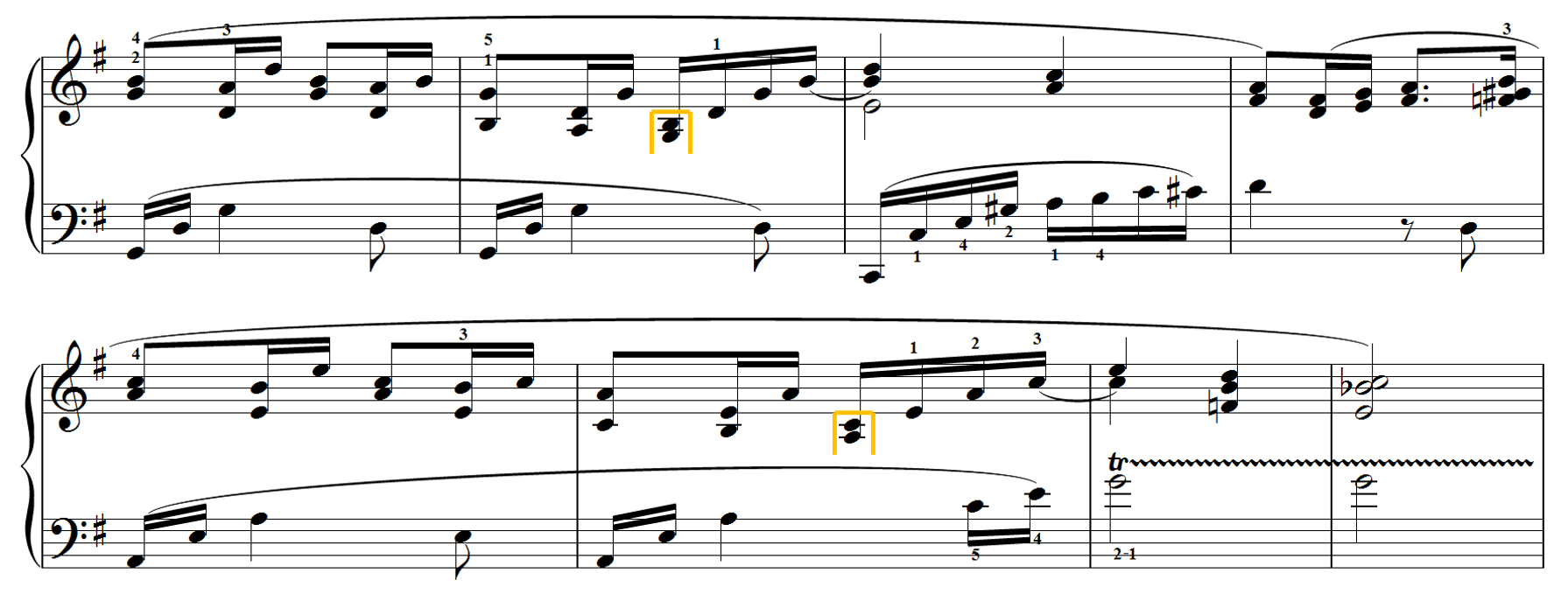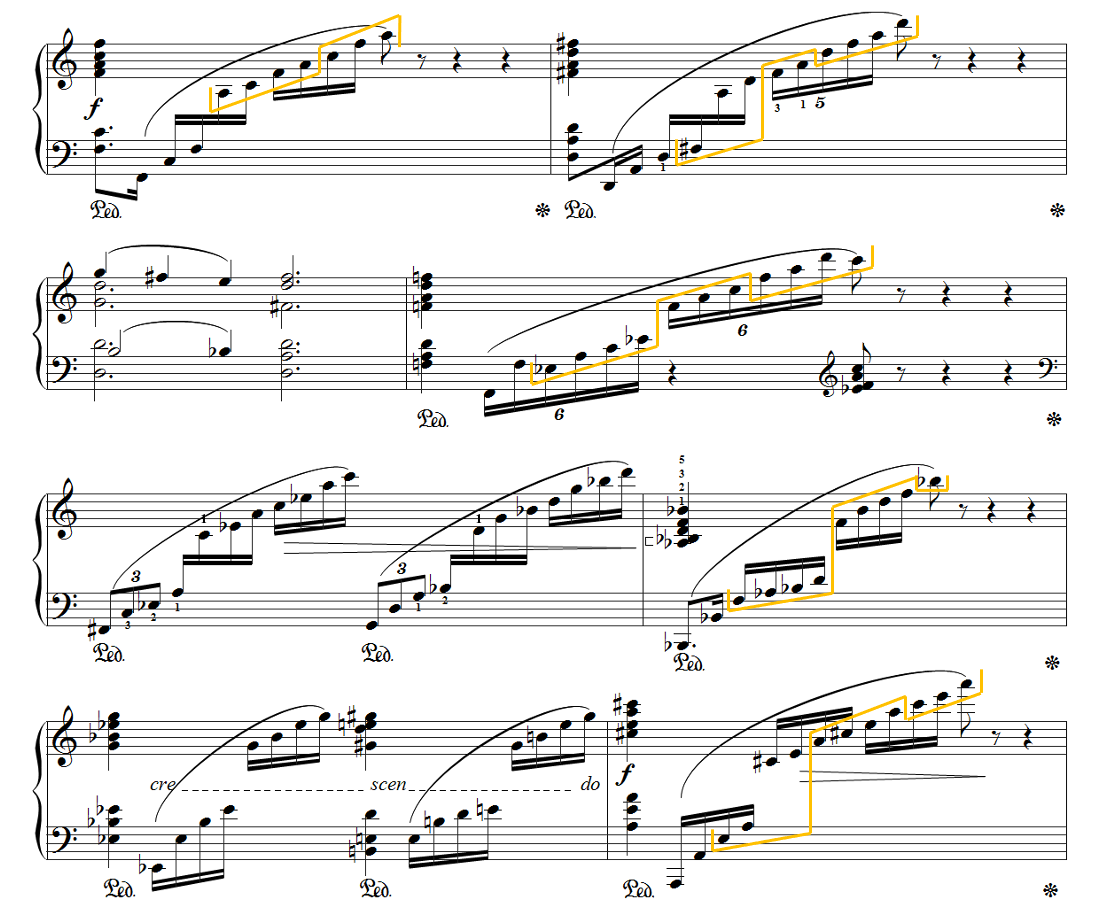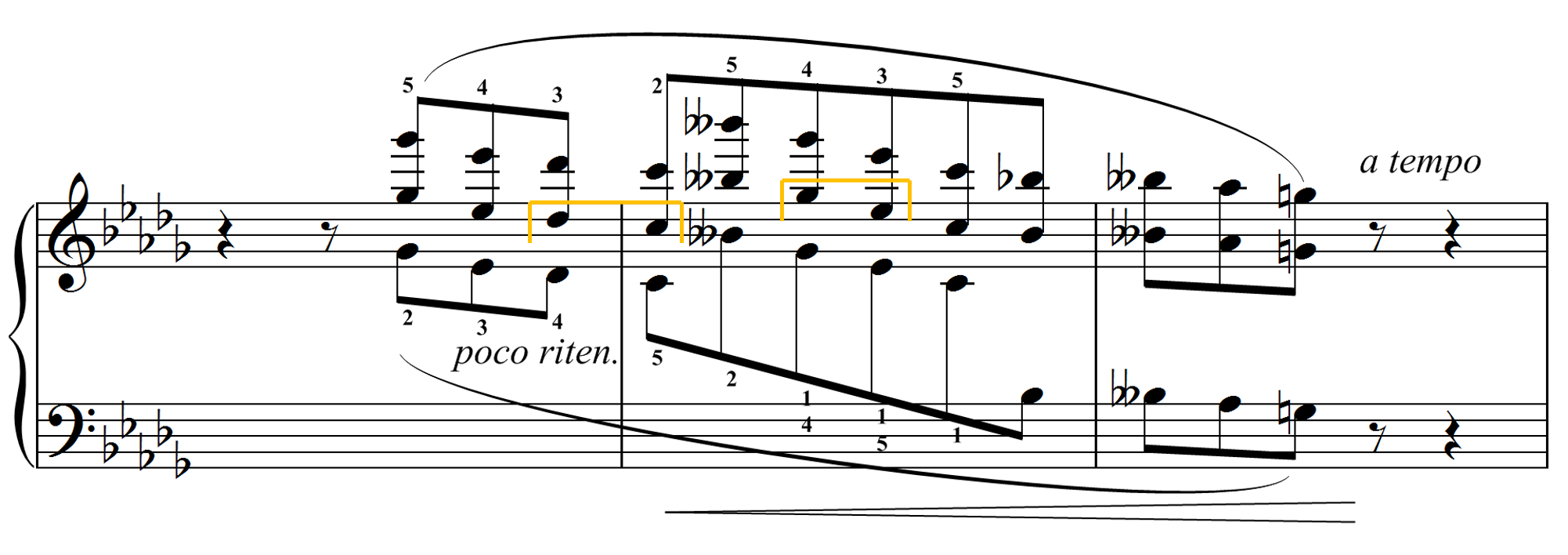“I like to divide the groups of seven in a consistent pattern.”
Submitted by Michael Clark
Published on 4/13/2020

“I like to divide the groups of seven in a consistent pattern.”
Submitted by Michael Clark
Published on 4/13/2020

“Dividing the run this way enables a more secure arrival at the D-sharp octave.”
Submitted by Michael Clark
Published on 4/13/2020

“Taking the low A in the left hand ensures the accuracy of the octave leap.”
Submitted by Michael Clark
Published on 4/13/2020

“The top notes of the left-hand line are already being played by the right hand, so no need for the left hand to shift.
Submitted by Michael Clark
Published on 4/13/2020

“Often the highest notes of the left hand line is already within the right hand’s grasp, so I prefer to let the right hand play them.”
Submitted by Michael Clark
Published on 4/13/2020

“The upper notes of the arpeggios fall directly in the right hand’s position.”
Submitted by Michael Clark
Published on 4/13/2020

“I prefer to take the top of the arpeggio as a triad to avoid crossing again in the left hand.”
Submitted by Michael Clark
Published on 4/13/2020

“The G-sharp is already being played by the right hand—no need to add an extra crossing in the left hand to play it.”
Submitted by Michael Clark
Published on 4/13/2020

“Where possible, I like to take the tops of arpeggios that reach high into the treble staff with the right hand.”
Submitted by Michael Clark
Published on 4/13/2020

“I find it more comfortable to end the right hand with a finger crossing than to start the left hand with one.”
Submitted by Michael Clark
Published on 4/13/2020

“As often happens in Strauss, the left reaches to a note the right hand is already playing. Why not have the right hand play it?”
Submitted by Michael Clark
Published on 4/13/2020

“Taking this dyad in the left hand eliminates position shifts in the right hand.”
Submitted by Michael Clark
Published on 4/13/2020

“I find some of these arpeggios more comfortable when taken hand over hand.”
Submitted by Michael Clark
Published on 4/13/2020

“This arpeggio comes very easily hand over hand.”
Submitted by Michael Clark
Published on 4/13/2020

“I like to divide these arpeggios more evenly between the hands.”
Submitted by Michael Clark
Published on 4/13/2020

Submitted by Frances Lee
Published on 3/15/2020

“The numerous instances like these throughout the movement free up the right hand to be more legato and to more easily follow the melodic inflection.”
Submitted by Bill Brown with thanks to Menahem Pressler
Published on 5/15/2020

“The numerous instances like these throughout the movement free up the right hand to be more legato and to more easily follow the melodic inflection.”
Submitted by Bill Brown with thanks to Menahem Pressler
Published on 5/15/2020